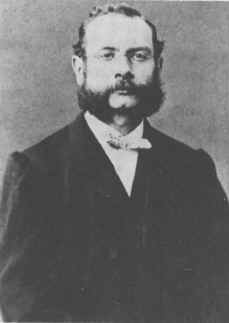History of the Mosin Nagant Rifle
When it comes to legendary rifles, few are as iconic and storied as the Mosin Nagant. This antique weapon, first introduced over a century ago, has seen more action than most of us can imagine—yet it’s still around today! Whether it’s on the range with hunters or on the battlefield, the Mosin Nagant has proven it’s here to stay. In fact, the Jackson Hole Shooting Experience retired a 1928 Mosin Nagant after an impressive 8,000 rounds in 2017, only to bring in a 1940s version to keep the tradition alive!
This rifle’s history is a wild ride, from bloody battles and sniper legends to revolutions and hunting trips. Let’s dive into the tale of this remarkable firearm.
Where It All Began: The Birth of the Mosin Nagant
Russia is no stranger to making weapons, but the Mosin Nagant’s story began during the Russo-Ottoman war of 1877-1878. Back then, the Soviet troops were stuck with the Berdan single-shot rifle—bad news when facing Turkish forces equipped with Winchester repeaters. After taking a beating, especially at the siege of Pleven, the Russian military knew they needed something better. Enter Captain Sergei Ivanovich Mosin, a Russian army officer with a dream to arm his country with a rifle that could hold its own.
By 1889, three designs were submitted for evaluation, one by Mosin, another by Belgian designer Leon Nagant, and a third by Captain Zinoviev. After testing from 1890 to 1891, Mosin’s design was selected. Despite some bias in favor of the Russian-made design, Mosin’s rifle won out and was named the 3-line Rifle M1891. Production began, and the rest, as they say, is history!

Leon Nagant
Nagant didn’t take the loss lightly and even filed an international patent for his feed system. But under pressure, he withdrew his case, and Mosin’s design went on to become a staple of the Russian military. Though Nagant may not have won that battle, his legacy lived on with the famous 1895 Nagant revolver, the official sidearm of the Russian army.
World War I, the Russian Civil War, and the Finnish Connection
Fast forward to World War I, and the Mosin Nagant had become the standard combat rifle for the Russian army. But with the outbreak of war in 1914, Russia’s manufacturing capabilities were stretched thin. To meet demand, they turned to American companies like Remington and New England Westinghouse, ordering millions of rifles.
Although these American-made Mosins were initially intended for the Russian army, the October Revolution in 1917 changed everything. The new Bolshevik regime canceled the orders, leaving the American companies with unpaid bills and a lot of rifles. These were eventually sold to the U.S. military and other buyers, marking the beginning of the Mosin’s spread beyond Russia.
The U.S.-Produced Mosins
Remington produced 750,000 rifles before halting production due to the revolution, and nearly half a million of these were shipped to Russia before the order was canceled. The remaining rifles found their way into the hands of the U.S. military and British forces, where they were primarily used for training but also saw combat action.
Spread by Force
During World War I and the Russian Civil War, the Mosin Nagant became a widely available weapon, serving both revolutionary and counter-revolutionary forces. Finland, which was part of the Russian Empire until declaring independence in 1917, adopted the Mosin Nagant as their primary military rifle after preserving large numbers of these weapons from Russian stockpiles. The Finns made several upgrades to the Mosin, making it even more formidable on the battlefield.
World War II and Three Famous Snipers
By the time World War II rolled around, the Mosin Nagant was a seasoned veteran. The M91/30 model was adapted as a sniper rifle in 1932, featuring scopes and mounts that outclassed the German versions of the time. This rifle became a favorite among Soviet snipers, who used it to devastating effect during the brutal conflicts on the Eastern Front.
The Mosin Nagant gained legendary status in the hands of snipers like Vasily Zaytsev, who racked up 225 confirmed kills during the Battle of Stalingrad. His exploits were immortalized in the movie “Enemy at the Gates.” Another famed sniper, Ivan Sidorenko, tallied 500 confirmed kills and trained over 250 Soviet snipers during his service. And let’s not forget Simo Hayha, the Finnish sniper known as “The White Death,” who used his Mosin Nagant to take out 505 Soviet soldiers during the Winter War—all without a scope!

Ivan Sidorenko
Simo Hayha’s story is particularly jaw-dropping. He relied solely on iron sights and his skills, managing to remain effective even at distances over 500 yards in brutal -40°C conditions. Over the course of just 100 days, he averaged five kills a day, making him the deadliest sniper in history.
The Cold War and Beyond
After World War II, the Soviets stopped producing the Mosin Nagant, but the rifle’s legacy was far from over. With more than 37 million units produced over 50 years, the Mosin Nagant continued to serve in the military arsenals of Eastern-bloc countries and beyond. Even today, the Mosin Nagant is still in use, particularly in regions like Afghanistan, Iraq, and Syria, where it continues to prove its worth on the battlefield.
From its humble beginnings in 19th-century Russia to its status as a global icon, the Mosin Nagant is a testament to rugged engineering and battlefield reliability. With over 120 years of service, this rifle isn’t just a piece of history—it’s a living legend.

